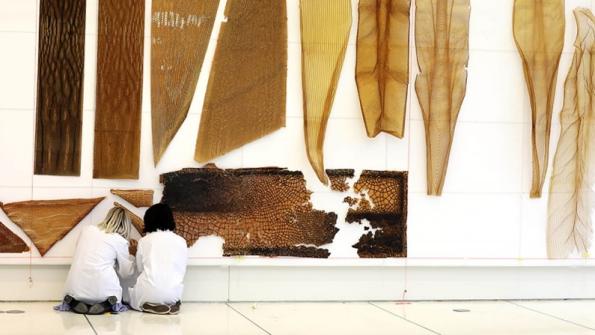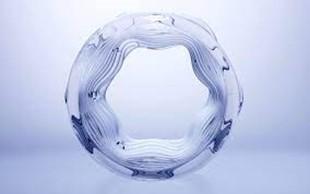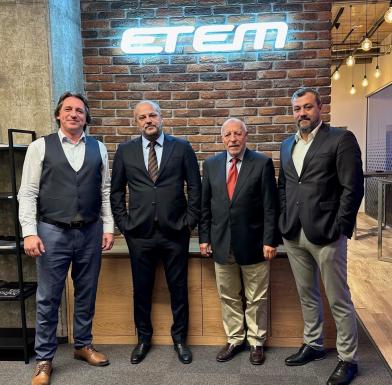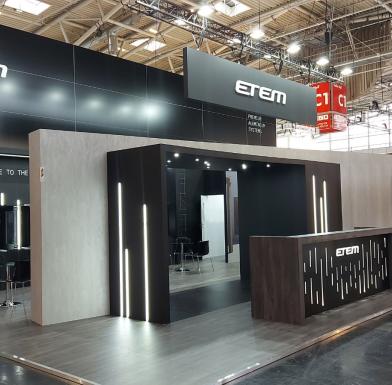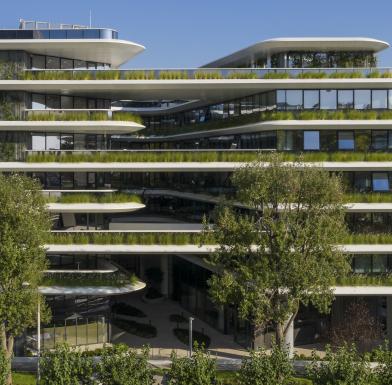NERI OXMAN’S “MATERIAL ECOLOGY”
Neri Oxman is an architect, scientist, engineer, and innovative inventor. As a founding director of The Mediated Matter Group at the MIT Media Lab, Oxman coined the term “material ecology” to describe an emerging field in which humans, automated processes, and nature unite to produce objects and structures that are designed through growth, with no assembly required. Her process integrates advanced 3D-printing techniques with in-depth research of natural phenomena, material ecology incorporates biology, engineering, materials science, and computer science.
Material Ecology is an emerging field in design denoting informed relations between products, buildings, systems, and their environment (Oxman, 2010). Defined as the study and design of products and processes integrating environmentally aware computational form-generation and digital fabrication, the field operates at the intersection of Biology, Material Science & Engineering, and Computer Science with emphasis on environmentally informed digital design and fabrication.
The concept of Material ecology is incorporated in different projects offering visions of a future in which objects are engineered by silkworms and infused with melanin or bacteria, buildings are capable of responding to variations in light and temperature, and things age and decay organically.
Here are some of Neri Oxman’s projects:
The Synthetic Apiary - Synthetic environment for bees
The Synthetic Apiary explores the possibility of a controlled space in which seasonal honeybees can thrive year-round. Light, humidity, and temperature are engineered to simulate a perpetual spring environment.
Bees are provided with synthetic pollen and sugared water and evaluated regularly for health and well-being. In this initial experiment, humans and honeybees cohabitate, enabling natural cultivation in an artificial space across scales, from organism- to building-scale.
Glass I and II - Glass column prototypes (2015–2017)
The project synthesizes modern technologies with age-old established glass tools and technologies to produce novel glass structures with numerous potential applications. Neri Oxman and her team unveiled a first-of-its-kind optically transparent glass printing process called G3DP.
G3DP is an additive manufacturing platform designed to print optically transparent glass. The tunability enabled by geometrical and optical variation driven by form, transparency, and color variation can drive, limit or control light transmission, reflection, and refraction, and therefore carries significant implications for all things glass.
Hybrid living mask prototypes - Vespers
(2016 - 2028)
This is a really unique project. Neri Oxman creates 3D-printed versions of ancient death masks.
Vespers is a collection of masks exploring what it means to design (with) life. From the relic of the death mask to the death mask as a contemporary living device, the collection embarks on a journey that begins with an ancient typology and culminates with a novel technology for the design and digital fabrication of adaptive and responsive interfaces.
Installation photo from the Barbican's AI: More than Human exhibition featuring Vespers by Neri Oxman and The Mediated Matter Group at MIT
Designed in collaboration with 3D-printing company Stratasys, the Vespers collection is made up of three series of five death masks. Each mask was formed using a Stratasys Objet500 Connex3 multi-material 3D printer, which constructs 3D forms by depositing polymer droplets in layers.
Sources: www.oxman.com, www.neri.media.mit.edu, www.moma.org, www.tlmagazine.com, www. re-thinkingthefuture.com, www.dezeen.com, www.s
